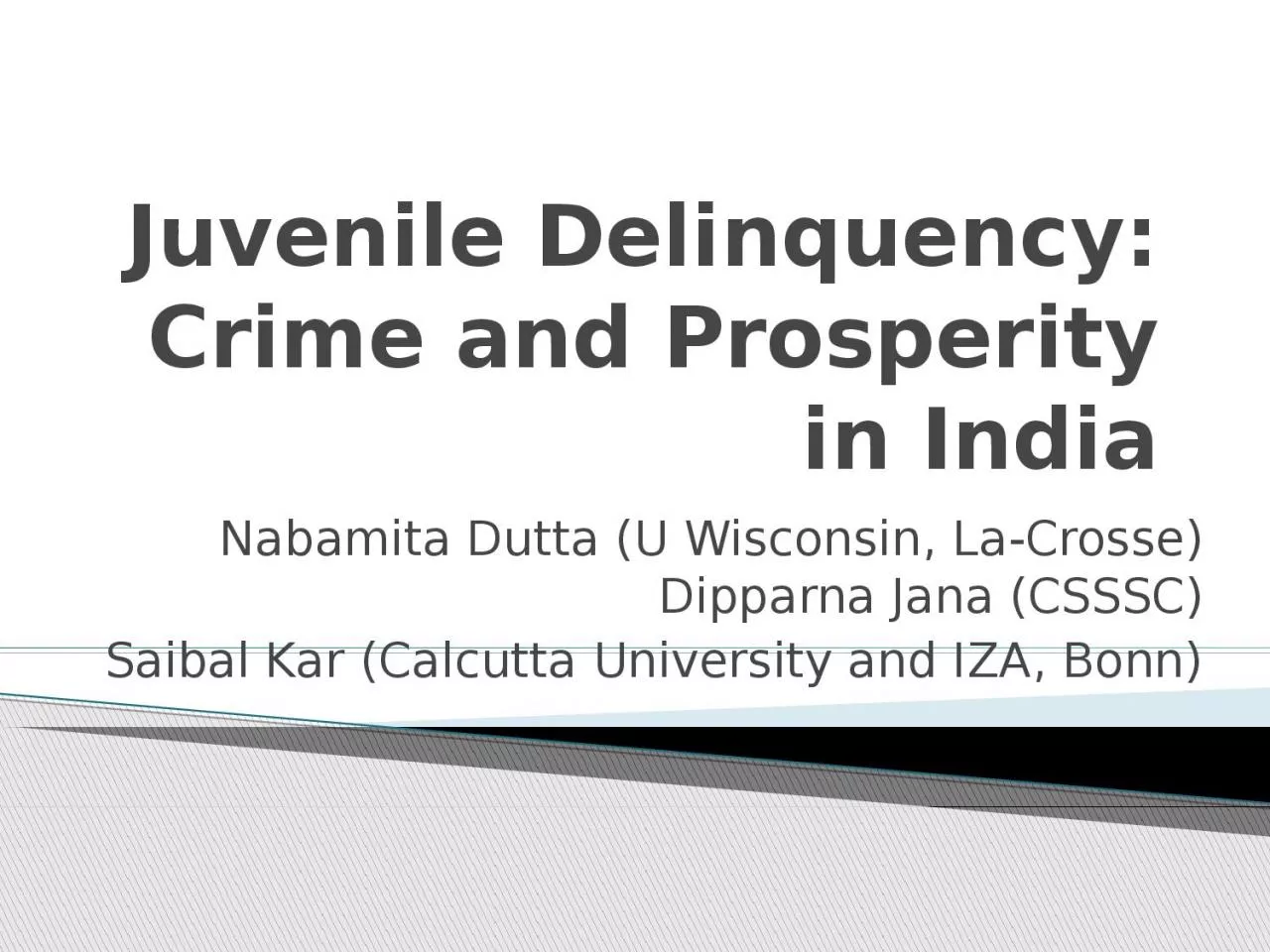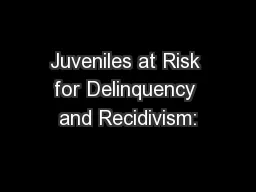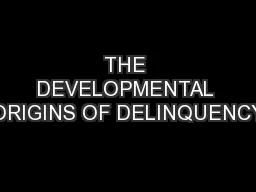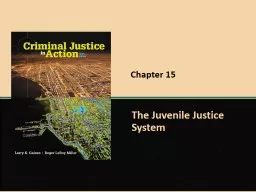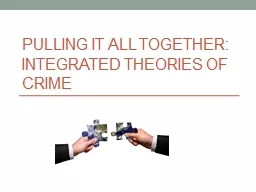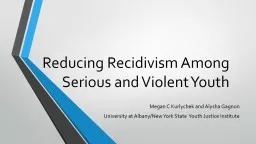PPT-Juvenile Delinquency: Crime and Prosperity in India
Author : Savageheart | Published Date : 2022-08-04
Nabamita Dutta U Wisconsin LaCrosse Dipparna Jana CSSSC Saibal Kar Calcutta University and IZA Bonn Delinquency among juveniles covers misdemeanor and felony as
Presentation Embed Code
Download Presentation
Download Presentation The PPT/PDF document "Juvenile Delinquency: Crime and Prosperi..." is the property of its rightful owner. Permission is granted to download and print the materials on this website for personal, non-commercial use only, and to display it on your personal computer provided you do not modify the materials and that you retain all copyright notices contained in the materials. By downloading content from our website, you accept the terms of this agreement.
Juvenile Delinquency: Crime and Prosperity in India: Transcript
Nabamita Dutta U Wisconsin LaCrosse Dipparna Jana CSSSC Saibal Kar Calcutta University and IZA Bonn Delinquency among juveniles covers misdemeanor and felony as part of individualgroup behavior . Agenda. Why. . are we here today?. Learning Objectives. Participants . will gain an understanding of:. Six juvenile justice settings. The advantages and challenges of offering mentoring services within each setting. Good Morning Truckee Presentation. February 9, 2016. Our History and Mission. Uniting Tahoe’s Communities to Strengthen Regional Prosperity. Founded in 2011 after the unprecedented collaboration of the 2010 Lake Tahoe Basin Prosperity Plan – the first comprehensive study of the Tahoe region’s economy. . April, 2012. A Research-Based Message Strategy. Methodology. Citizen Opinion worked with . Mike Bocian and Greenberg . Quinlan . Rosner. Research to conduct . a survey . among 1,001 American adults on behalf of the Campaign for Youth . A . Grant Proposal. By Lauren Saunders. Presented to the School of Social Work. California State University, Long Beach . May 2013. Introduction. Juvenile delinquency is an issue that impacts the Long Beach community. George E. Davis, MD . New Mexico Department of Children, Youth and Families. for. Child Trauma Academy. . Juvenile arrest rate highest ever in 1996 and then declined 48% by 2011. MALE AND FEMALE ARREST RATES—. SOC 106. Part 5. : Developmental Views of Delinquency. Developmental theory. - of crime and delinquency. - onset / continuity / termination. - experience / characteristics. - life course theory / latent trait theories. Mass Consumption. Speculation Boom. Uneven Prosperity . Mass Consumption. Changes in production led to new patterns of consumption (mass markets for goods). More advertising. Workers with High wages & More time= Greater purchasing power. By Jill Saxton-Moody, MA, CDCII. 10/16/2015. AK DJJ Mission: . Hold juvenile offenders accountable for their behavior.. Promote the safety and restoration of victims and communities. . Assist offenders and their families in developing skills to prevent crime. . Originally, juvenile offenders were treated the same as adult criminals. Beginning in 1899, states began forming separate juvenile courts. States took responsibility for parenting the children until they showed signs of positive change. Forward. History of . the JJDPA. Marc . Schindler. Executive Director . Justice Policy . Institute. Background. Juvenile Justice & Delinquency Prevention Act (JJDPA) authorizes federal funds to go to the states for juvenile justice.. Learning Objective 1. Describe the child- saving movement and its relationship to the doctrine of . parens patriae. .. Peter Andrew Bosch/Miami Herald/MCT via Getty Images. The Evolution of American Juvenile Justice. Doing Theoretical Integration. Up to now, we have examined many micro- and some macro-level theories including the three major theories in contemporary criminology. Learning. Anomie/strain. Control . Serious and Violent Youth. Megan C Kurlychek and Alysha Gagnon. University at Albany/New York State Youth Justice Institute. Politics and Panic. Lyndon B. Johnson first to declare “war on crime” . x0000x0000Suggested Reference Development Services Group Inc Community Awareness/Mobilization Literature review Washington DC Office of Juvenile Justice and Delinquency Prevention Prepared by Develop
Download Document
Here is the link to download the presentation.
"Juvenile Delinquency: Crime and Prosperity in India"The content belongs to its owner. You may download and print it for personal use, without modification, and keep all copyright notices. By downloading, you agree to these terms.
Related Documents

